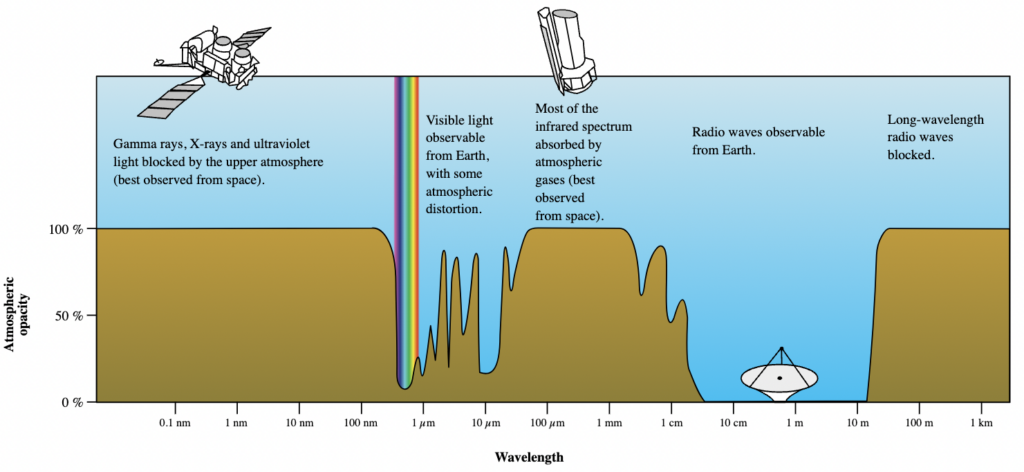Astronomy is all about studying objects or phenomena in space. Aside from a few rocks every once in a while, the only stuff we get from space is light. In space, this light may have been (1) given off (emitted), (2) bounced around by (scattered), or (3) absorbed by these objects or phenomena. These are the three general ways in which light can interact with anything. So understanding these interactions allows us to answer questions many of us have about space. Another way of saying this is that an understanding of these interactions helps us to interpret the data or images we collect from space.
Broadly, the understanding of how we can interpret the light we get from space falls under the field of observational astronomy. Observational astronomy can be done from space-borne telescopes or telescopes on the surface of the Earth. However, when done from the surface, the atmosphere of the Earth must be taken into consideration.
Electromagnetic radiation (a.k.a. light) carries energy through space. We can think of light as carrying energy as a wave or as small bundles of energy called photons. The energy carried by light is related to the frequency or wavelength of that light. This energy governs how this light will interact with anything it comes into contact with.
For the light that enters our atmosphere, certain wavelengths (i.e., energies) of light are absorbed and others are scattered. If we want to be *very* technical, some wavelengths of light are even emitted by our atmosphere!

On the right is a figure borrowed from Wikipedia:“Atmospheric Electromagnetic Opacity” that shows the general pattern of wavelengths of light that are blocked by the atmosphere of the Earth. You can see that most of the visible light (the backward rainbow colors in the image below) can get through the atmosphere. However, the atmosphere still affects this light. The remainder of this article is dedicated to a description of these interactions.
*under construction*
GIVE EXAMPLES OF EMITTERS ON EARTH
GIVE EXAMPLES OF SCATTERERS ON EARTH
GIVE EXAMPLES OF ABSORBERS ON EARTH
GIVE EXAMPLES OF EMITTERS IN SPACE
GIVE EXAMPLES OF SCATTERERS IN SPACE
GIVE EXAMPLES OF ABSORBERS IN SPACE